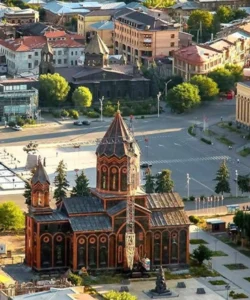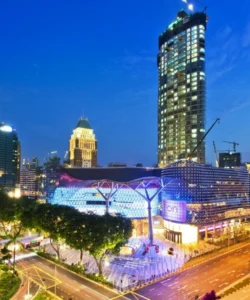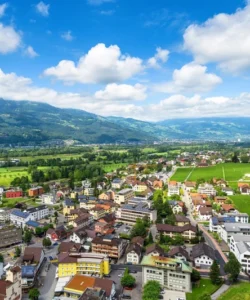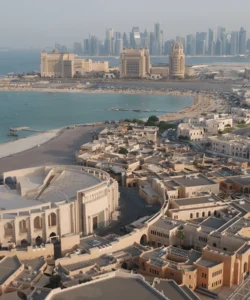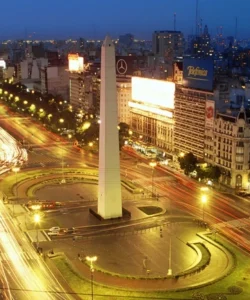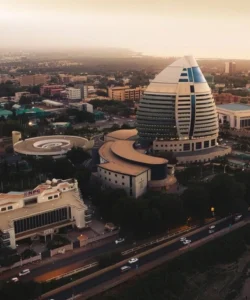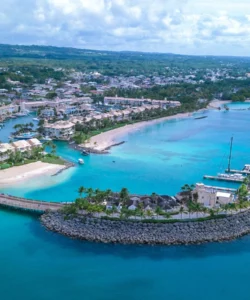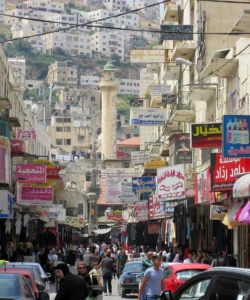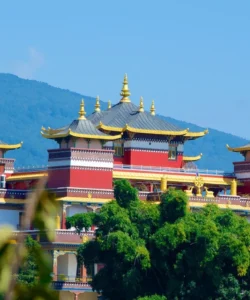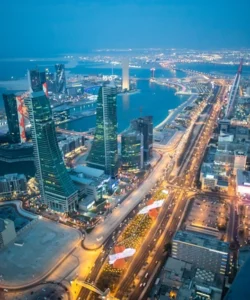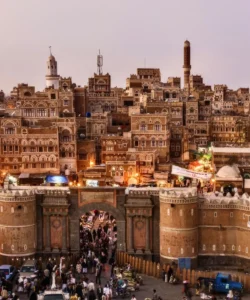Colombia is a vibrant country located at the northern tip of South America, known for its incredible biodiversity, rich cultural heritage, and diverse landscapes ranging from Caribbean beaches to Andean mountains and Amazonian jungles.
Listen to an introduction about Colombia
![]()
Area and Population:
Colombia covers an area of approximately 1,141,748 km² (440,831 sq mi). Its population is estimated to be around 52.8 million inhabitants (as of 2024).
Language:
The official language of Colombia is Spanish. Various indigenous languages are also spoken by different ethnic groups, particularly in remote areas.
Currency:
The currency of Colombia is the Colombian Peso (COP).
Religion:
The predominant religion in Colombia is Catholicism, accounting for the vast majority of the population, a strong legacy of Spanish colonization. Protestantism, particularly Evangelical denominations, has a growing presence, along with smaller percentages of other faiths and non-religious individuals.
Capital:
The capital city of Colombia is Bogotá, a high-altitude metropolis nestled in the Andes Mountains. It is the country’s political, economic, and cultural heart, known for its colonial architecture, museums, and vibrant urban life.
Major Cities:
Besides Bogotá, other significant cities in Colombia include:
- Medellín: Known as the “City of Eternal Spring” for its pleasant climate, a city that has undergone a remarkable transformation, famous for its innovation and cultural events.
- Cali: The “Salsa Capital of the World,” a vibrant city in the southwest known for its music, dance, and sugarcane industry.
- Cartagena: A stunning colonial port city on the Caribbean coast, a UNESCO World Heritage site renowned for its walled city, colorful architecture, and romantic atmosphere.
- Barranquilla: A major port city on the Caribbean coast, famous for its lively Carnival, one of the largest in the world.
- Bucaramanga: A city in the northeast known as the “City of Parks.”
- Santa Marta: Another important city on the Caribbean coast, offering access to beautiful beaches and the Tayrona National Natural Park.
Attractions and Wonders:
Colombia offers an incredible array of attractions for every type of traveler:
- Cartagena’s Walled City: A UNESCO World Heritage site, a beautifully preserved colonial city with colorful buildings, charming plazas, and historic fortifications.
- Tayrona National Natural Park: On the Caribbean coast, combining pristine beaches (like Cabo San Juan), lush rainforest, and archaeological sites of the Tairona indigenous people.
- Cocora Valley (Valle de Cocora): Near Salento in the Coffee Region, famous for its surreal landscape of towering wax palms (the national tree), often shrouded in mist.
- Coffee Cultural Landscape (Eje Cafetero): A UNESCO World Heritage site in the Andean foothills, offering beautiful scenery, coffee farm tours, and charming towns like Salento and Filandia.
- Bogotá: Explore La Candelaria (historic district) with its colonial architecture, visit the Gold Museum (Museo del Oro) showcasing pre-Hispanic gold artifacts, and ride the cable car up Monserrate Hill for panoramic views.
- Medellín: Ride the Metrocable for city views, visit Comuna 13 (a vibrant neighborhood with street art), and explore the Botanical Garden and Plaza Botero with Fernando Botero’s sculptures.
- Caño Cristales (The River of Five Colors): A unique river in Serranía de la Macarena National Natural Park, famous for its vibrant red, yellow, green, and blue hues caused by an endemic plant species (best visited July-November).
- Ciudad Perdida (Lost City): An ancient Tairona city hidden deep in the Sierra Nevada de Santa Marta mountains, accessible via a multi-day challenging trek.
- San Andrés and Providencia: Beautiful Caribbean islands with white sand beaches, turquoise waters, and vibrant coral reefs, popular for diving and relaxation.
- Tatacoa Desert: A unique dry, arid region with striking red and gray rock formations, excellent for stargazing.
Architecture:
Colombian architecture reflects its rich history and diverse regions:
- Colonial Architecture: Most prominently seen in cities like Cartagena, Bogotá’s La Candelaria, and Popayán, characterized by colorful facades, wooden balconies, inner courtyards, and ornate churches, influenced by Spanish Baroque and Neoclassical styles.
- Republican Architecture: Late 19th and early 20th-century buildings often feature European-inspired designs.
- Modernist and Contemporary Architecture: Bogotá and Medellín, in particular, showcase significant modern urban planning and contemporary architectural projects, often incorporating innovative design and public spaces.
- Indigenous Architecture: Traditional constructions, particularly in rural and indigenous communities, reflect ancestral building techniques adapted to local environments.
Roads:
Colombia has made significant investments in its road infrastructure in recent years, with major highways connecting principal cities and regions. However, due to its mountainous terrain, many roads are winding, and travel times can be long. Rural roads may be unpaved or poorly maintained. Bus travel is a very popular and affordable way to get around the country, with an extensive network.
Hotels:
Colombia offers a wide range of accommodation options. In major cities and popular tourist destinations, you’ll find luxury international chain hotels, boutique hotels (especially in colonial centers), business hotels, and numerous mid-range and budget-friendly hotels and hostels. Eco-lodges are prevalent in nature parks and the Coffee Region. Cartagena boasts stunning boutique hotels within the walled city.
Restaurants and Cuisine:
Colombian cuisine is diverse and hearty, with regional variations, often emphasizing fresh ingredients, stews, and corn-based dishes.
- Key Dishes:
- Ajiaco Santafereño: A creamy potato and chicken soup with guascas (a local herb), corn, and often served with capers and cream, a specialty of Bogotá.
- Bandeja Paisa: A huge platter from the Antioquia region (Medellín), typically including grilled steak, ground beef, chicharrón (pork belly), chorizo, fried egg, plantain, avocado, arepa, and red beans with rice.
- Arepas: A staple, versatile cornmeal patty, served plain or filled with cheese, meat, or other ingredients.
- Sancocho: A traditional soup or stew with various meats (chicken, beef, fish), root vegetables (yuca, potato, plantain), and corn.
- Empanadas: Small, fried savory pastries filled with meat, potatoes, or cheese.
- Lechona: A whole roasted pig stuffed with rice, peas, and spices, often served for special occasions.
- Patacones: Fried green plantain slices.
- Fritanga: A mixed platter of various fried meats, sausages, and potatoes.
- Restaurants: From upscale international dining in Bogotá and Medellín to charming colonial restaurants in Cartagena, and bustling local eateries (casas de comida) and street food vendors everywhere, Colombia offers a rich culinary experience. Each region has its own specialties worth exploring.

